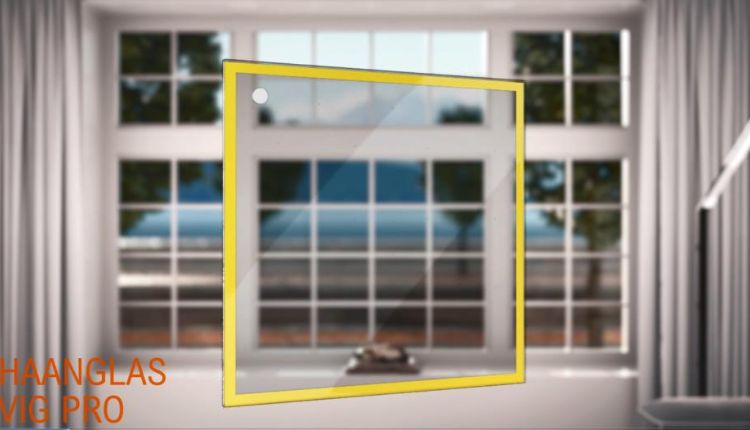In the global race toward net zero, buildings and glazing play a critical role. Space heating, cooling, and ventilation are major energy consumers—and windows are often one of the weakest thermal links. By upgrading with HaanGlas Vacuum Insulating Glass (VIG), property owners can achieve substantial CO₂ reductions over the lifecycle of a project, not simply short-term energy savings.
Why CO₂ emissions matter
As HaanGlas points out in its Global Energy Actions / Carbon Reduction Target page, to hold global warming within 1.5 °C, emissions must fall ~45% by 2030 and reach net zero by 2050. Building renovation and envelope upgrades are central to that decarbonization.
Windows equipped with conventional double- or triple-glazing still lose heat via conduction, convection, and radiation. In contrast, vacuum glazing replaces the gas fill with a ~0.15 mm vacuum gap, dramatically cutting heat transfer and enabling lower heating and cooling energy
Energy savings translate to CO₂ reductions
On HaanGlas’s “Retrofitting with Energy-Efficient Vacuum Glazing” page, they claim that VIG can yield up to 60% energy cost savings in many projects. This is especially meaningful for emission modeling, because reduced energy demand means lower fossil fuel or grid electricity consumption, thus cutting CO₂ output.
Let’s walk through a simplified example over a 25-year operational life:
Suppose a building with conventional windows emits 10,000 kg CO₂/year for heating/cooling.
If VIG reduces that by 40–60%, we might reduce emissions by 4,000–6,000 kg CO₂ annually.
Over 25 years, that’s 100,000–150,000 kg (100–150 metric tons) of CO₂ avoided.
That’s before counting additional savings from reduced HVAC sizing, less load on systems, and potential renewable integration synergy.
Lifecycle & embedded carbon considerations
When advocating CO₂ savings, it’s important not to overclaim—production, transport, installation, maintenance, and end-of-life all carry embodied carbon. However, because HaanGlas VIG units are thin and lightweight (e.g. ~15-20 kg/m² for typical units) with optimized processes, their embedded carbon is modest.
In fact, HaanGlas highlights that their lifetime exceeds 25 years. With long service life, the carbon “payback” window is relatively short because the operational savings dominate over time.
Moreover, HaanGlas’s R&D and manufacturing strategy emphasizes sustainability. Their corporate materials describe a commitment to reducing building carbon emissions at scale.
Case references & real deployments
HaanGlas has already marketed VIG for heritage restorations in Europe, delivering glass units for historic windows in the Netherlands and beyond—glass thicknesses of 8.15 mm and 10.15 mm were shipped to preserve original frames. In those cases, the clients cited energy and carbon savings (e.g. 75% energy cost reduction) while retaining the original window aesthetics.
Elsewhere, HaanGlas notes that vacuum glass thermal conductivity is ~10% that of standard glass, meaning far less heat exchange—and in turn far less heating or cooling CO₂ emissions.
Putting the numbers to work
To help you apply this in your market:
Baseline energy model — estimate CO₂ emissions from heating/cooling with your existing windows.
Apply a reduction factor (e.g. 40–60%) per published performance gains (from HaanGlas’s claim).
Spread over expected life (e.g. 25 years) minus initial embodied carbon.
Use that to support ROI, ESG, or carbon offset claims.
Why HaanGlas VIG leads the sustainability case
| Feature | Benefit for CO₂ reduction |
| Thin, lightweight | Lower material/transport carbon burden |
| Long lifespan (> 25 years) | Extended period of operational savings |
| High thermal performance (U ≈ 0.47 W/m²·K or better) | Strong reduction in heating/cooling demand |
| Proven retrofit and heritage use | Enables upgrades without full window replacement |
| Sustainable R&D orientation | Aligns with net zero and ESG goals |
Final thoughts & call to action
Switching to HaanGlas VIG is not just a glass upgrade — it’s a climate investment. The avoided CO₂ emissions over decades can justify decision making in ESG, sustainability, and financial terms.
If you’re evaluating window upgrades or retrofit projects, contact us via our Contact Page (link above) to request detailed lifecycle emissions estimates, case study data, or CO₂ comparators tailored to your building. Let’s make low-carbon glazing the new standard.

